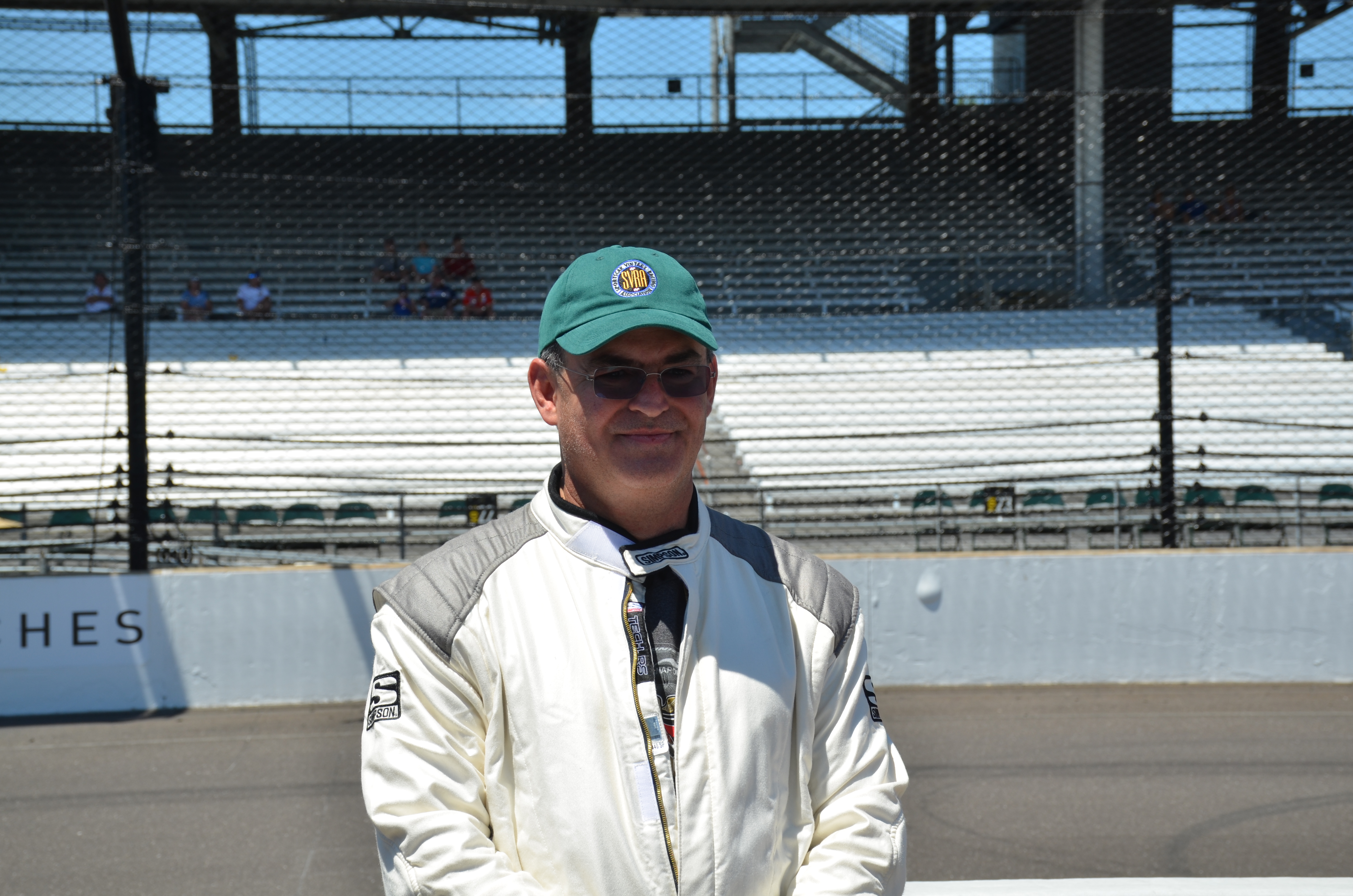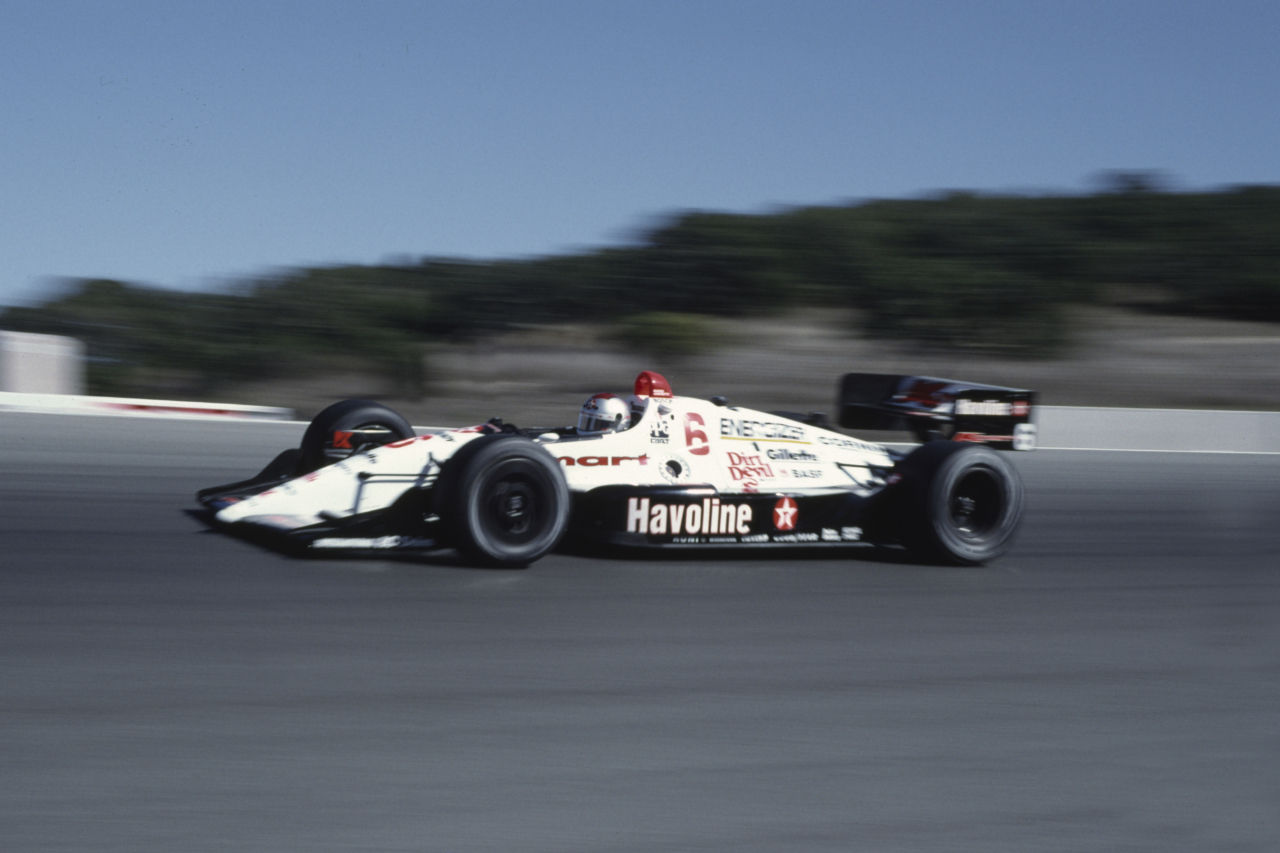|
Nick Dioguardi
Nick Dioguardi (October 12, 1932 – May 11, 2015) was a racing driver born in Alia, Italy, based in Glendale, California. Throughout his career Dioguardi made a single IndyCar start in 1970. Racing career Dioguardi first appeared on the national racing series at the 1965 SCCA National Championship Runoffs. At Daytona International Speedway Dioguardi ran a Brabham in the Formula SCCA race. Dioguardi started 21st but failed to finish the race running in ninth place. The following year, at Riverside International Raceway, he finished in first place beating Phil Groggins. In 1969 Dioguardi, at the Riverside Grand Prix, his Lotus Formula C struck a photographer. The photographer survived the impact suffering a broken leg. As of 1968 Dioguardi also ran in Formula A. Both times, in 1968 and 1969, he failed to finish the race. Dioguardi first ran a World Racing Enterprises Shadow in 1968 and a Surtees TS5 the following year. In 1969 Dioguardi also entered the Continental 49'er at Se ... [...More Info...] [...Related Items...] OR: [Wikipedia] [Google] [Baidu] |
Alia, Italy
Alia (Sicilian language, Sicilian: ''Àlia'') is a ''comune'' in the Metropolitan City of Palermo, on the Italy, Italian island of Sicily. It is known for the Grotte Della Gurfa, or Gurfa Caves Urban Reserve. References Municipalities of the Metropolitan City of Palermo {{Sicily-geo-stub ... [...More Info...] [...Related Items...] OR: [Wikipedia] [Google] [Baidu] |
1969 SCCA Continental Championship
The 1969 SCCA Continental Championship was the third annual running of the Sports Car Club of America's professional open wheel racing series.1969 SCCA Continental Championship Review, www.myf5000.com Retrieved on 20 February 2014 It was the first to carry the '''' name as the previous two series had both been staged as the ''Grand Prix Championship''. The 1969 championship was open only to cars.Wolfgang Kopfler, Formula A and Formula 5000 in America - Race by ... [...More Info...] [...Related Items...] OR: [Wikipedia] [Google] [Baidu] |
1986 Indianapolis 500
The 70th Indianapolis 500 was held at the Indianapolis Motor Speedway in Speedway, Indiana on Saturday, May 31, 1986. After being rained out on May 25–26, the race was rescheduled for the following weekend. Bobby Rahal was the winner, becoming the first driver in Indy history to complete the in less than three hours. At an average speed of , it was the fastest 500-mile Indy car race to that point. Nearly the entire race unfolded as a three-way battle between polesitter Rick Mears, Bobby Rahal, and Kevin Cogan. Cogan, who was a key fixture in the controversial crash on the opening lap of the 1982 race, took the lead in dramatic fashion with 13 laps to go. Cogan, driving for Patrick Racing, appeared to be on his way to victory, and career redemption. But on lap 194, his lead evaporated when a spin by Arie Luyendyk brought out the caution flag. After a quick cleanup, the green flag came back out with two laps to go. Second place Bobby Rahal got the jump on the restart and grabbe ... [...More Info...] [...Related Items...] OR: [Wikipedia] [Google] [Baidu] |
Josele Garza
Josele GarzaBiography (born March 15, 1962 in , Mexico) is a Mexican professional race car driver. He started seven races. Garza was the Rookie of the Year after starting sixth, leading 13 laps, and finishing 23rd at the age of 19. At 19 years, two months, and nine days, Gar ... [...More Info...] [...Related Items...] OR: [Wikipedia] [Google] [Baidu] |
David Hobbs (racing Driver)
David Wishart Hobbs (born 9 June 1939) is a British former racing driver. He worked as a commentator from the mid 1970s for CBS until 1996, Speed from 1996 to 2012 and NBC from 2013 to 2017. In 1969 Hobbs was included in the FIA list of graded drivers, a group of 27 drivers who by their achievements were rated the best in the world. Hobbs was inducted into the Motorsports Hall of Fame of America in 2009.David Hobbs at the Driving career Hobbs was born, in |
Jackie Oliver
Keith Jack "Jackie" Oliver (born 14 August 1942 in Chadwell Heath, Essex) is a British former Formula One driver and team-owner from England. He became known as the founder of the Arrows team as well as a racing driver, although during his driving career he won both the 24 Hours of Le Mans race and the Can-Am championship. Driving career Oliver began a long career in motorsport in 1961, driving a Mini in British club saloon racing. In 1962 and 1963 he raced for Ecurie Freeze in a Marcos GT. In 1964 He raced in a Lotus Elan driving for D.R. Fabrications team and entered GT racing, scoring some excellent results, and then having a difficult time in Formula Three, where his natural speed was blighted by mechanical failures. Nevertheless, for 1967 he was drafted into the Team Lotus Formula Two team, which also saw him making his Grand Prix debut in the F2 class at the German Grand Prix, where he came fifth overall and won the F2 class. In 1968, he was called up by Colin Ch ... [...More Info...] [...Related Items...] OR: [Wikipedia] [Google] [Baidu] |
Mazda Raceway Laguna Seca
Laguna Seca Raceway (branded as WeatherTech Raceway Laguna Seca, and previously Mazda Raceway Laguna Seca) is a paved road racing track in central California used for both auto racing and motorcycle racing, built in 1957 near both Salinas and Monterey, California, United States. The racetrack is long, with a elevation change. Its eleven turns are highlighted by the circuit's signature turn, the downhill-plunging "Corkscrew" at Turns 8 and 8A. A variety of racing, exhibition, and entertainment events are held at the raceway, ranging from superkarts to sports car racing to music festivals. Laguna Seca is classified as an FIA Grade Two circuit. The name Laguna Seca is Spanish for ''dry lagoon'': the area where the track now lies was once a lake, and the course was built around the dry lake bed. After the course was reconfigured, two artificial ponds were added. History The earliest development of the local area occurred in 1867 with the founding of the nearby Laguna Seca ... [...More Info...] [...Related Items...] OR: [Wikipedia] [Google] [Baidu] |
1972 Can-Am Season
The 1972 Canadian-American Challenge Cup was the seventh season of the Can-Am auto racing series. It was contested by FIA Group 7 racing cars running two-hour sprint events. The series began June 11, 1972, and ended October 29, 1972, after nine rounds. It was jointly sanctioned by the Sports Car Club of America and the Canadian Automobile Sports Club.Can-Am 72 - The begininning of another era?, Automobile Year 1972/73, pages 178 to 187 The series was won by George Follmer driving a Porsche 917/10 for Penske Racing. Schedule Season results Drivers Championship Points are awarded to the top ten finishers in the order of 20-15-12-10-8-6-4-3-2-1. For classification, the four best results of the first five races and all four results of the last four races were retained.Can-Am Chmapionship, Automobile Year 1972/73, page 247 References * * {{DEFAULTSORT:1972 Can-Am Season Can-Am seasons Can-Am The Canadian-American Challenge Cup, or Can-Am, was an Sports Car Club ... [...More Info...] [...Related Items...] OR: [Wikipedia] [Google] [Baidu] |
Can-Am
The Canadian-American Challenge Cup, or Can-Am, was an Sports Car Club of America, SCCA/Canadian Auto Sport Clubs, CASC sports car racing series from 1966 to 1987. History Can-Am started out as a race series for group 7 sports racers with two races in Canada (''Can'') and four races in the United States of America (''Am''). The series was initially sponsored by S. C. Johnson & Son, Johnson Wax. The series was governed by rules called out under the Fédération Internationale de l'Automobile, FIA Group 7 (racing), group 7 category with unrestricted engine capacity and few other technical restrictions. The group 7 category was essentially a Formula Libre for sports cars; the regulations were minimal and permitted unlimited engine sizes (and allowed turbocharging and supercharging), virtually unrestricted aerodynamics, and were as close as any major international racing series ever got to have an "anything goes" policy. As long as the car had two seats, bodywork enclosing the wheel ... [...More Info...] [...Related Items...] OR: [Wikipedia] [Google] [Baidu] |
Desert Diamond West Valley Phoenix Grand Prix
The Desert Diamond West Valley Phoenix Grand Prix was an IndyCar Series race held at the Phoenix Raceway in Avondale, Arizona, United States. USAC moved the fall race and added a spring race to the newly built Phoenix International Raceway in 1964. The race became a CART event in 1979, and joined the Indy Racing League in 1996. It was held continuously through 2005. After a hiatus of eleven years, the race was revived by the IndyCar Series in 2016. It was held on Saturday night under the lights. Long considered a popular Indy car track, Phoenix saw the final career victory for Mario Andretti (1993). History During its time on the USAC Championship Car circuit, Phoenix International Raceway typically held two races annually, one in the spring, and one in the fall. During the CART years, two races were scheduled through the mid-1980s, but the track dropped down to one race per year starting in 1987. In many years, Phoenix served as the CART season opener. After a feud between the t ... [...More Info...] [...Related Items...] OR: [Wikipedia] [Google] [Baidu] |
Phoenix International Raceway
Phoenix Raceway is a 1-mile, low-banked tri-oval race track located in Avondale, Arizona, near Phoenix. The motorsport track opened in 1964 and currently hosts two NASCAR race weekends annually including the final championship race since 2020. Phoenix Raceway has also hosted the CART, IndyCar Series, USAC and the WeatherTech SportsCar Championship. The raceway is currently owned and operated by NASCAR. Phoenix Raceway is home to two annual NASCAR race weekends, one of 13 facilities on the NASCAR schedule to host more than one race weekend a year. It first joined the NASCAR Cup Series schedule in 1988 as a late season event, and in 2005 the track was given a spring date. The now-NASCAR Camping World Truck Series was added in 1995 and the now-NASCAR Xfinity Series began running there in 1999. NASCAR announced that its championship weekend events would be run at Phoenix for 2020, marking the first time since NASCAR inaugurated the weekend that Homestead-Miami Speedway would not ... [...More Info...] [...Related Items...] OR: [Wikipedia] [Google] [Baidu] |
Eisert Racing Enterprises
Eisert (North German: from a shortening of the ancient Germanic personal name Isenhart composed of the elements īsan "iron" + hard "hardy, brave, strong".) is a German surname. Notable people with the surname include: * Jens Eisert (born 1970), German physicist * Sandra Eisert Sandra Eisert (born January 1, 1952) is an American photojournalist, now an art director and picture editor. In 1974 she became the first White House picture editor. Later she was named Picture Editor of the Year by the National Press Photogra ... (born 1952), American photojournalist, now an art director and picture editor See also * {{surname German-language surnames Surnames from given names Low German surnames ... [...More Info...] [...Related Items...] OR: [Wikipedia] [Google] [Baidu] |


.jpg)



